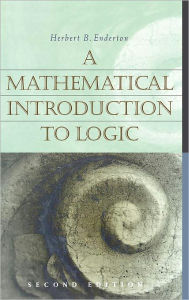Free PDF ebooks (user's guide, manuals, sheets) about Discrete mathematics ensley pdf torrent ready for download. Doug Ensley's Home Page. Professor of Mathematics. Shippensburg University. I have been a member of the Department. Mathematics at Shippensburg.
Ensley Crawley Discrete Mathematics.pdf Free Download Here Discrete Mathematics, Student Solutions Manual: Mathematical. Related Book PDF Book Discrete Mathematics Student Solutions Ensley: - Home - Ducati 750ss 750 Ss 1975 1976 1977 Desmo Shop Repair Manual - Ducati 750ss 900ss 1991.

Obrazac Za Rastavu Braka Pdf Merge. Kumon is the world’s largest after-school enrichment program. Our math and reading curriculums start with preschool material for kids as young as age three, and advance all the way to the end of high school. Kumon has two sides: the academic learning side and the side where we teach students how to self-learn, gain confidence and become independent thinkers. We combine advancing their math and reading skills with teaching them how to become even better students. They learn how to put in effort.
How to learn from failure. How to evaluate and be analytical when they’re solving a problem and find a mistake—and how not to erase the whole answer but go back and find exactly where the mistake occurred.
Over time, many of our students become very confident as they work on material years beyond their grade level. They often find themselves doing school homework much faster and with better results. And many are able to qualify for advanced classes in high school that help with their future college education. In the Kumon Program, students learn through daily practice of about 30 minutes per subject per day. Two days a week they complete assignments at their Kumon Center, and the other days they do them at home, or wherever life takes them. A Short History Of The French Revolution Popkin Ebook Torrents there.
When you first enroll your children, we’ll have them complete a placement test that identifies the most appropriate starting level for them. This has nothing to do with their age or grade in school; it’s about the skills they’ve mastered to date. Based on their starting level, they’ll work on daily assignments through what we call a self-learning approach. As they’re working on their assignments, we’re also assessing whether they’ve mastered each concept by looking at their speed and accuracy. If they’ve mastered it, great! They advance to the next level. If they haven’t, we have them go back to relearn those concepts.
A wonderful difference between the Kumon curriculum and the school curriculum is that your children advance based on their abilities alone. In school, your kids are limited—regardless of their knowledge level, if they’re in third grade, they’ll be limited to studying third-grade material. In Kumon, however, they have the freedom to move ahead when they’re ready for each incremental lesson. That’s why so many Kumon children are studying material one, two, three or more years ahead of their grade level. If you are concerned that your child will be bored in school after advancing with Kumon, our parents and students report the opposite. Students with a firm grasp of the fundamentals in math and reading become much more engaged and self-confident in school. Doing homework each night also becomes less daunting and time consuming—a plus for both students and parents.
And with Kumon, you have more information on how their learning is advancing, so you can make sure any curriculum includes classes that are appropriately challenging. • Tutoring may not get to the root of the problem.
When a child needs help with math or reading, tutoring often focuses on addressing an immediate need. The Kumon Method recognizes that a child’s struggle likely stems from having missed earlier, fundamental learning. • Kumon identifies where your child’s learning started to fall behind, while a tutor may not.
To fix the root of your child’s struggles, the starting point needs to be correct. While a tutor may begin tutoring a fifth grader on fifth-grade material, Kumon may start them at a different level. • Tutoring is passive learning. Kumon teaches self-learning. A tutor often sits with a child and explains how to solve a problem. This makes the child a passive learner, listening to an explanation with no guarantee the concept has been fully grasped. Conversely, self-learning in Kumon keeps your children actively engaged.